Today, Olympus announced the new OM-D E-M10, a new Micro Four Thirds camera that finds its place beside the OM-D E-M5 and the OM-D E-M1. Yes, you read that correctly, the new E-M10 is NOT the E-M5 replacement but an entry-level model that is positioned below the E-M5. Not only does this marketing choice raise many interesting questions, but it also confirms the willingness of Olympus to expand and push the OM-D camera line.
We’ve been testing the camera for five days now, which Olympus kindly sent us along with the new Olympus 25mm f1.8 and 14-42mm f/3.5-5.6 pancake zoom lens. Here are our initial thoughts about these new and exciting products following our first days of testing.
OM-D E-M1 Main Specs
- Sensor: 16 megapixel 4/3 Live MOS Sensor
- Lens system: Micro Four Thirds interchangeable lens system
- ISO Sensitivity: 200 – 25600 ISO (extended 100)
- Continuous shooting: 8 fps (maximum)
- Autofocus: Contrast detection AF with 81 focus points
- Internal Stabilisation: Yes (3 axis image stabilisation)
- Viewfinder: Electronic, approx. 1.440K dots and 100% FOV
- LCD Screen: Tilting 3″ LCD touch monitor
- Movie recording: Full HD up to 30p (CHECK)
- Weatherproof: No
- Dust reduction filter: Yes – Supersonic Wave Filter
- Built-in Flash: Yes
- Extra Features: Built-in WiFi, Art Filters, Live Composite
- Weight: 519g (including battery and memory card)
N.B.: all the images in this article are OOC JPGs with the vidid profile.


Entry level or E-M5 twin? Well actually…
To begin, let’s delve into the most obvious comparisons. The E-M10 is clearly inferior to the flagship E-M1. The only three things that the cameras share are the the touch screen LCD, TruePic VII processor and the 81 contrast detection AF target areas. The E-M10 lacks phase detection capabilities but it is correct to say that it share the same contrast detection AF system as the E-M1.
There are also three features on the E-M10 which neither the E-M5 nor the E-M1 possess:
- A new Live Composite mode, which goes a step further than the Live Bulb/Time mode. It gives you the ability to take several long exposure shots at a regular interval of time and merge them into a single final image. Without going into further detail for now, it basically allows you to do an in-camera star trail photograph for example.
- A more advanced WiFi functionality that allows you to use your smartphone as a remote trigger, while adjusting all the settings on the camera directly. This is something that apparently many photographers asked for. Unfortunately, it won’t be possible to implement this feature into the E-M1 via firmware update because the E-M10 has a different WiFi hardware than the E-M1.
- A built-in EVF with a shorter latency
Now that the main differences between the E-M1 and E-M10 are clear, let’s compare the new camera with the E-M5. Here things get a little bit more complicated.
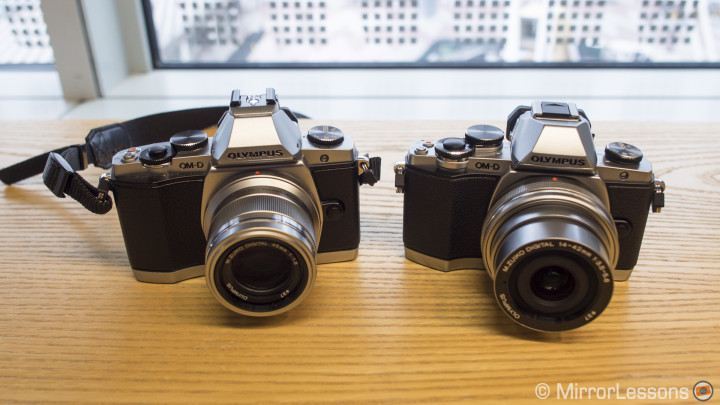
What the E-M10 and E-M5 share:
- The same 16mp Live Mos Sensor
- Contrast detection AF
- Same EVF resolution (1,440,000-dot)
Strengths of the E-M5 in comparison to the E-M10:
- 5 axis stabilisation: the E-M10 IS only works on three axes (it lacks the vertical and horizontal shift axes, more on that later)
- slightly faster continuous shooting mode (9fps on the E-M5 vs. 8 fps on the E-M10 in AF-S mode)
- weather-sealed body: the E-M10 body is not weather sealed.
Strengths of the E-M10 in comparison to the E-M5:
- A newer image processor (True Pic VII instead of VI)
- No AA filter
- 81 AF target areas (E-M5 has 35 target areas)
- Advanced WiFi capabilities
- A higher speed rate mode for the EVF (120 fps) with Adaptive Brightness Technology (same as the E-M1) and shorter latency
- An improved button layout
- A built-in flash
Now that the main differences have been explained, let’s go back and analyse the new features of the OM-D E-M10 and the most important differences between it and the two other OM-D cameras.
Subtle improvements in a smaller package
Design and Ergonomics
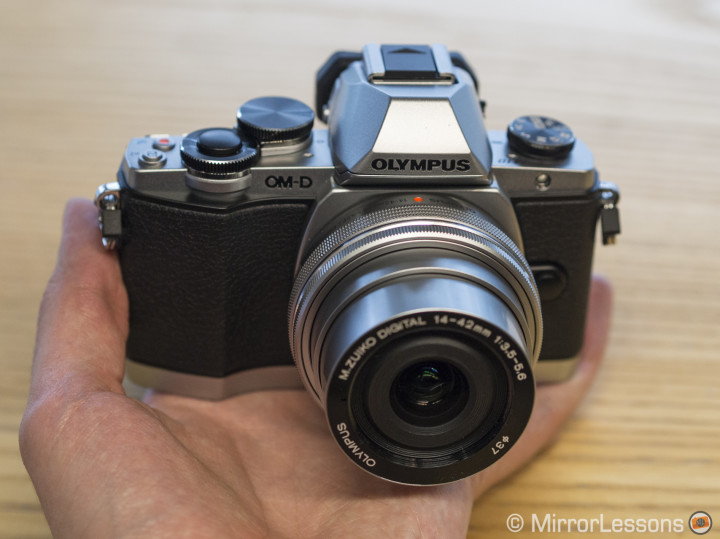
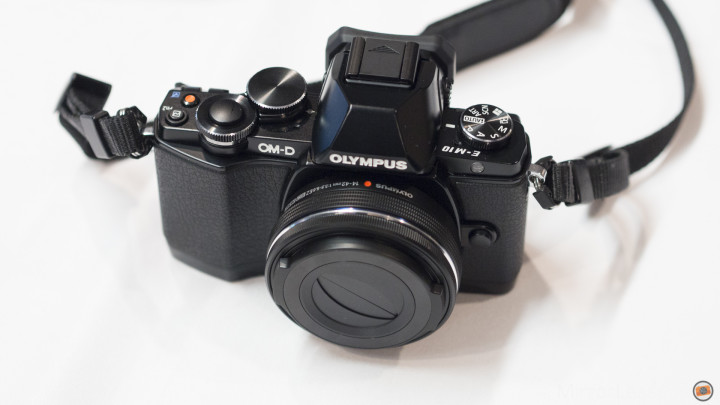
The OM-D E-M10 is slightly smaller than the E-M5 and has a more refined button layout on the rear. Some very minor improvements have been made to the main dials on top and to the overall grip of the camera. Despite the body being slightly smaller, I found the ergonomics and grip very similar to the E-M5. But the improvements to button design and the dials make it nicer to use.
Below you can check out our hands-on video with the camera, where we also show how it differs from the E-M5.
To summarise what is explained in the video, you can also check out a gallery below where we highlight the key differences in each image caption.
New high-speed EVF
While the E-M10 EVF shares the same size and resolution as the one built into the E-M5 (1,440,000-dot), it’s performance is better and also has some unique characteristics. First, it shares the same Adaptive Brightness Technology found on the E-M1. This means that it can reproduce dark and bright scenes more accurately by automatically adjusting its brightness. As a result, it is more natural to adapt to the human eye.
So far, I think that EVF works well but I did notice that it had a tendency to show a more exposed image than the actual result.
However, the newest feature is its high speed capabilities: when enabled in the menu, the new high speed mode brings the frame rate up to 120 fps, which shortens the latency between the scene and what you see in the viewfinder. At 120 fps, the time lag is a mere 0.0007s.
During the first days of use, I noticed that this was particularly beneficial when shooting in low-light conditions, especially when panning, as the images remain clearer and crisper. It doesn’t give you the impression of slow shutter speed you often notice when using an EVF in low-light conditions. But there is a catch: in high-speed mode, there is also a loss of resolution. Olympus doesn’t state how much resolution the EVF loses. So far, I haven’t noticed anything drastic.
I can also presume that boosting the speed of the EVF might shorten the battery life but I cannot confirm this just yet.
3-axis stabilisation
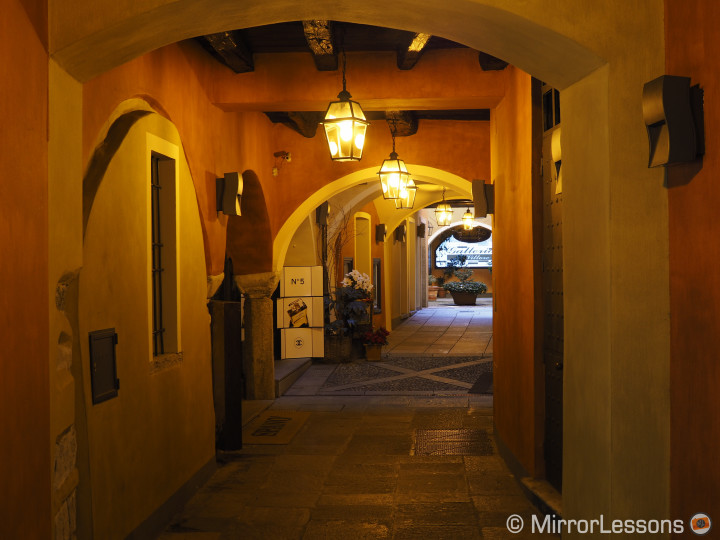
Be sure to check out our comparison between the E-M10’s 3 axis stabilisation and the E-M5’s 5 axis stabilisation!
One of the characteristics that makes OM-D cameras unique is their internal stabilisation, called 5-axis stabilisation. The sensor is literally “floating” and the camera compensates for micro shakes by moving on five different axes (pitching, yawing, rolling, horizontal and vertical shift).
On the OM-D E-M1, I managed to expose shots at 1 second and 1 second and a half and take perfectly sharp images (you can read more about that here).
On the OM-D E-M10, however, Olympus chose to include only three axes. The E-M10 lacks the horizontal and vertical shift. Olympus explains this choice by stating that the smaller body of the E-M1 required some modification in the hardware but the lack of two axes is compensated by the addition of electronic image stabilisation.
My first impression is that I do feel a difference in comparison to the E-M5 or the E-M1. I must say that I’ve become so confident in the 5-axis stabilisation that I was a little bit surprised at first when I saw that some of my slow shutter speed photos (1/20s, 1/10s) were slightly blurry. I do feel that with the E-M10, its “safe shutter speed” is faster than the one you can set on the E-M1. This may seem obvious as we are talking about two different stabilisation systems. After investigating a little bit more, I found that most of the time, if I take two shots in a row, the first will be slightly blurry while the second will be perfectly sharp.
Below you can see a quick example that summarise my thoughts (click on the photos to open them at their full resolution)
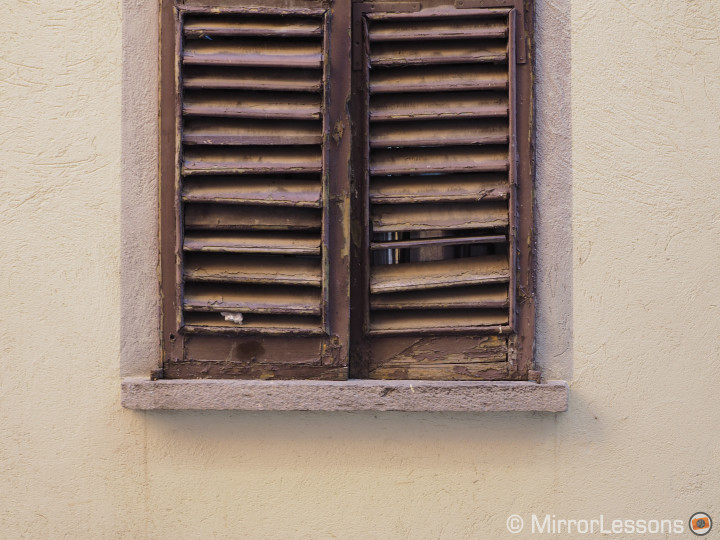
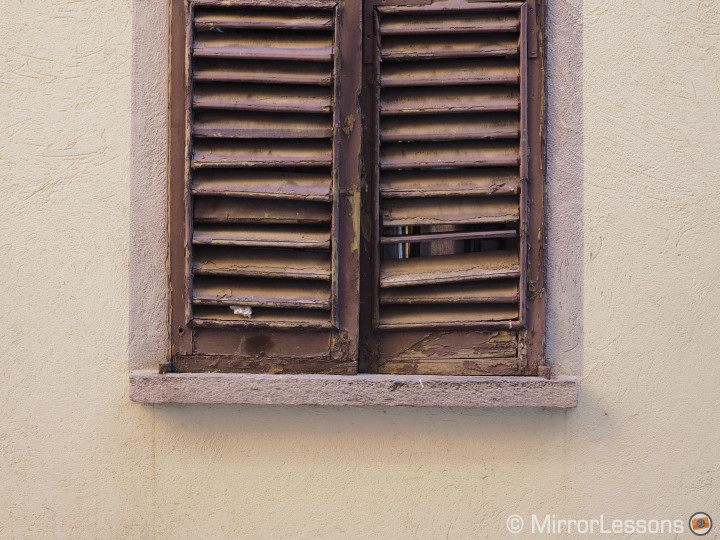
I need to perform more tests before reaching any conclusion as there are certainly various elements influencing the result. Olympus states that there is a noticeable difference only for hand-held macro shots, so I will try that as well.
But if I forget the E-M5 or E-M1 for a second, and use the camera from the point of view of a new user, the initial results of the stabilisation are certainly more than positive.
Performance and other important features
Of course, I haven’t tested everything yet. During the first few days with a new camera, I like using it in a very instinctive way, without thinking too much about every aspect to test and check. Rather, I simply enjoy the hunt for a nice scene to capture.
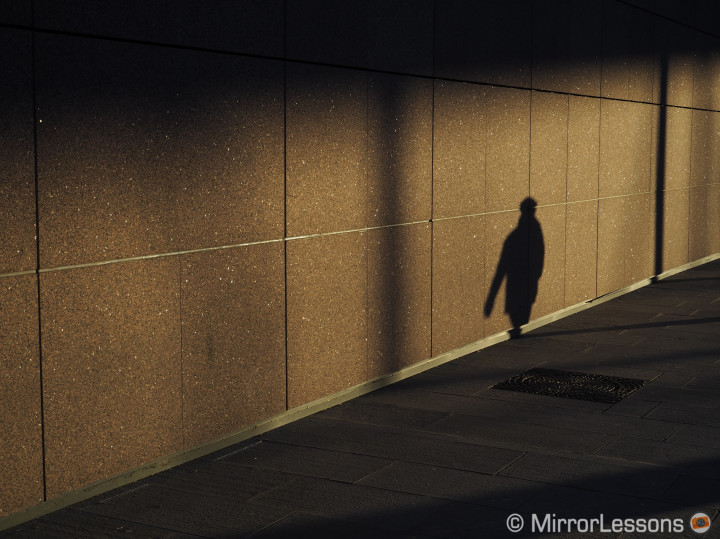
The immediate discovery that some of the features like overall speed and autofocus accuracy behave exactly like the other models makes me feel that, in a way, the camera is already familiar to me when it comes to its performance. As such, I haven’t felt driven to check how AF behaves because from day one, I’ve been able to say with confidence, “Yes, that’s an OM-D!”.
One of the features I am most curious to test but will require some time to perform is the new composite live mode. One of the most notable features of OM-D cameras is the Live Bulb function where the camera gives you a preview of a long exposure shot while the shutter is open. This new function allows you to merge several different long exposure shots taken at a specified interval of time. In the official product shots, you can see that Olympus shows a star trail photograph on the LCD screen and this is the most obvious example of a result you can achieve with this function.
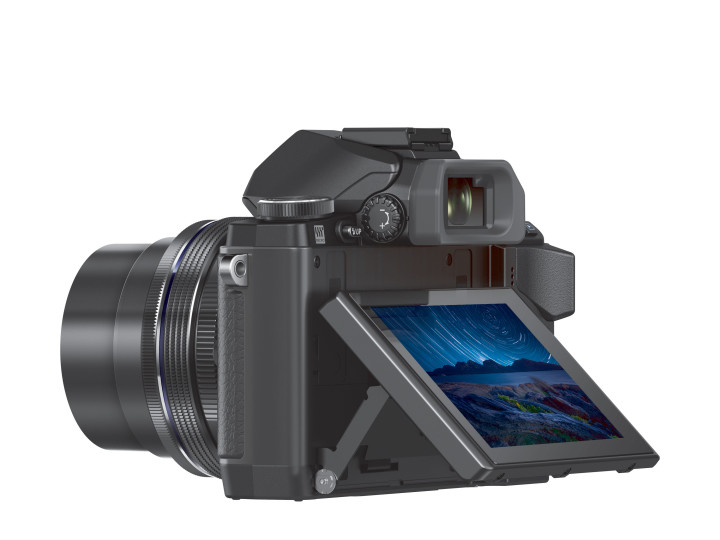
Star trails usually require you to process and merge the different shots via software on the computer. The possibility to do it on-camera is certainly intriguing and since I’ve never tried to make star trail photographs before, this is certainly a great excuse to start. 😉
Another worthwhile feature is the enhanced WiFi function. You can manually control the camera via the official app on your smartphone or tablet device. With the new pancake zoom lens, which has an electronic zoom, you can also change the focal length via the device.
Finally, Olympus also added a functionality where the smartphone becomes a wireless camera trigger. Usually when you activate the WiFi function on a digital camera, you can only control it from the device. In this case, you control each setting on the camera but take the shot from the smartphone to avoid any micro-shakes when pressing the shutter release button.
OM-D E-M10 image quality samples

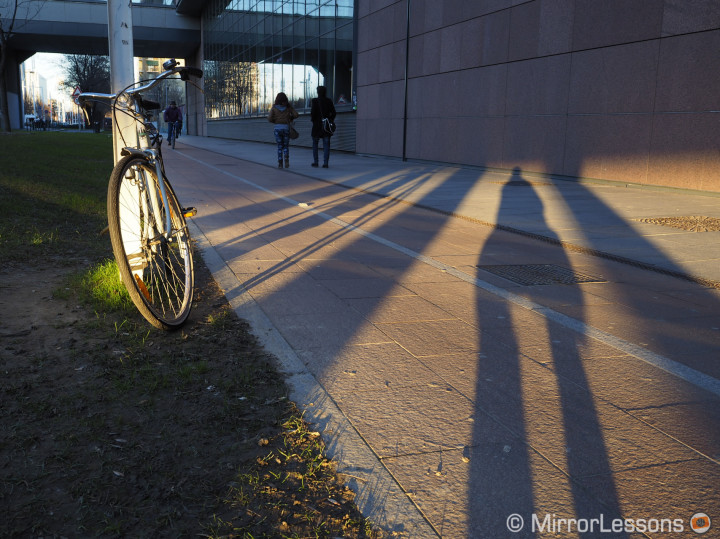

I won’t talk about overall image quality for now. This is a first impression article and I’d prefer to talk about it in the final review. The E-M10 has the same sensor as the E-M5 so I expect that it will share the same image quality, and the first samples I’ve taken with the camera seem to confirm the obvious. I will dig further to see if the E-M1 processor adds something to it. In the meantime, here is a gallery of sample images. Enjoy!
The new M.Zuiko 25mm f/1.8
Along with the E-M10, Olympus has also launched two new lenses. One of them is a focal length that was missing among the primes, and that is the M.Zuiko 25mm f/1.8 (50mm equivalent of 35mm format).
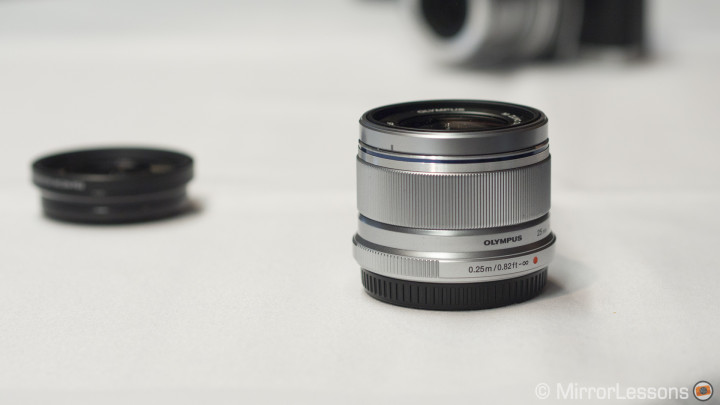

The new M.Zuiko 25mm f/1.8 completes the set of fast 1.8 primes and has the same build quality as the 45mm f/1.8, which means it is made of plastic on the outside. Just like the 45mm, the build feels very solid. If you have seen the video at the beginning of the article, you will have also breathed a sigh of relief upon hearing that Olympus has finally decided to include a lens hood with the lens.
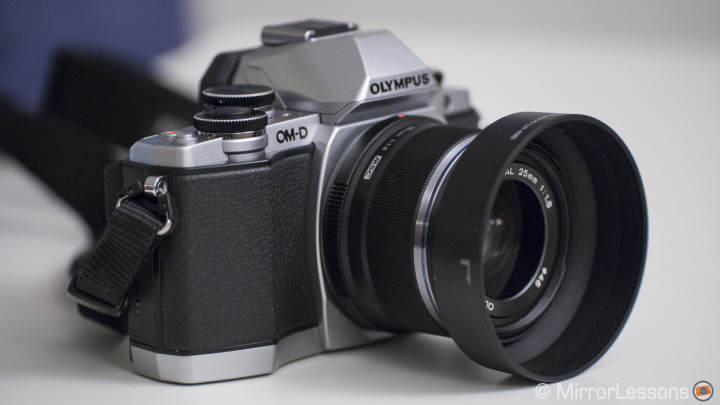
But how is the performance of this new lens? Well, I cannot give you complete feedback yet but the first impressions are very positive. Especially at its fastest aperture, the lens gives excellent results in terms of sharpness.



The lens contains 9 elements in 7 groups (like the Lumix Leica 25mm 1.4) but only the rear group of lenses moves for the focus, which generates better results according to Olympus. The front lens is concave so that enough light can hit the image corners. Two aspherical lenses positioned in the middle reduce the risk of spherical and chromatic aberration. Finally, the lenses have a Zero Coating treatment to reduce flare and ghosting.


The only thing I noticed is that if you are facing direct sunlight, the lens can generate a huge purple flare. This is something that I’ve seen many times on Micro Four Thirds sensors with different lenses (both wide angle and middle telephoto) but I was surprised to see that amount of purple flare on the 25mm.

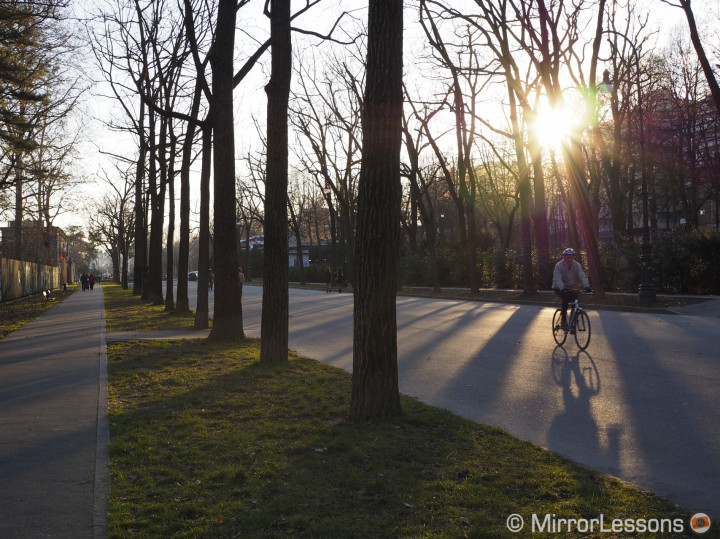

However, this seems to be related to a specific angle at which the light rays enter the lens. After a few test shots, I found that if I slightly tilt the camera up or down (a matter of millimetres really), the purple flare disappears and you get what I would call a normal lens flare.
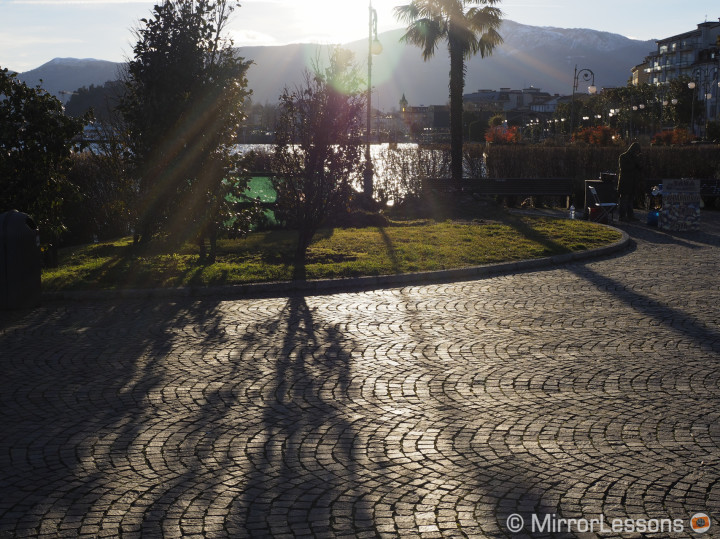
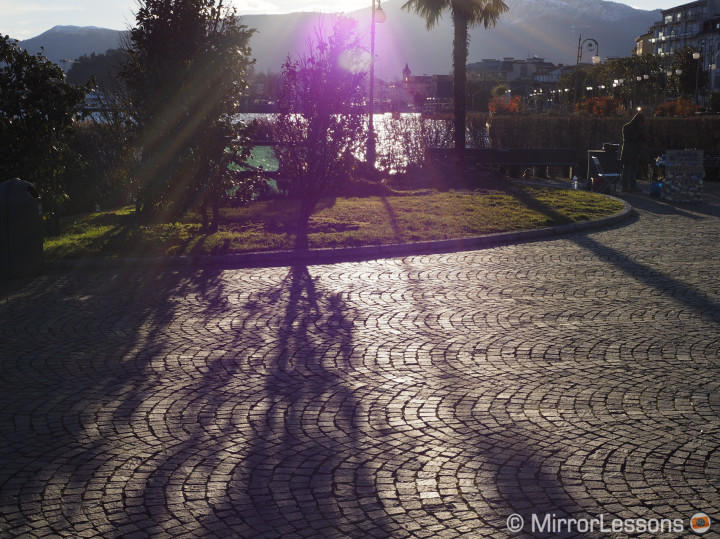
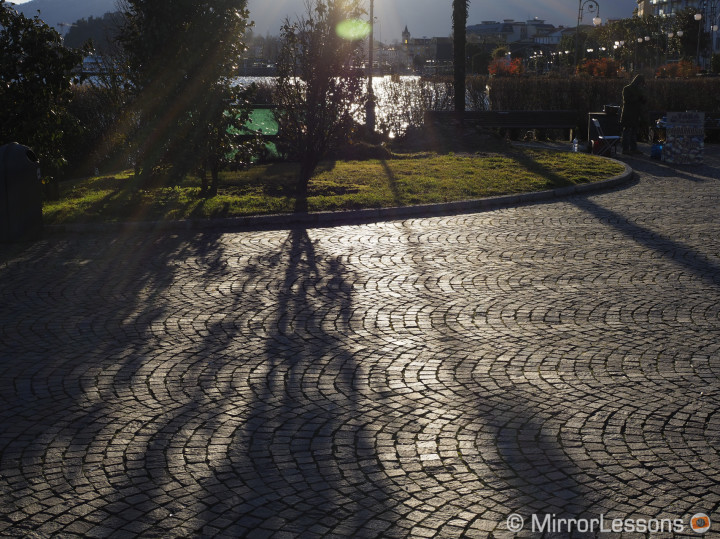
In the end, this doesn’t seem to be a major issue but it must be kept in mind when you want to take that kind of shot. As for everything else, it really seems to be a lens that shares the same quality found in the other M.Zuiko prime lenses.
The new M.Zuiko 14-42mm f/3.5-5.6
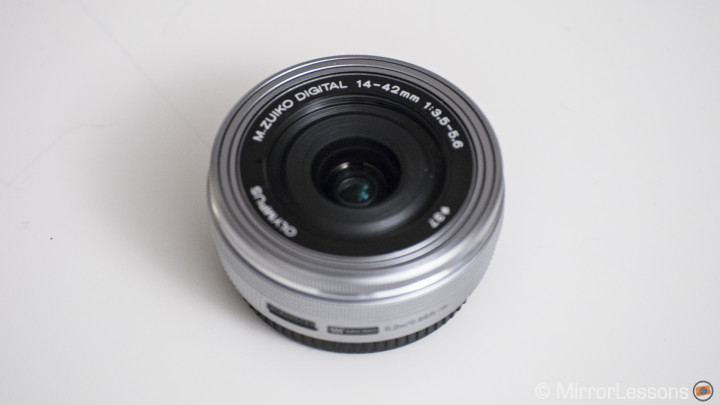
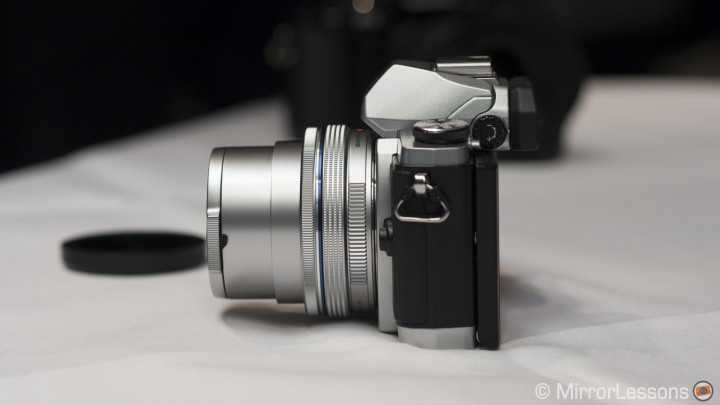
I admit I was a little skeptical at beginning about the M.Zuiko 14-42mm f/3.5-5.6. I usually don’t like electronic zoom controls and I thought it would make the sensation too similar to that of point-and-shoot cameras but I was wrong. It is quiet nice to use actually.
By slightly turning the zoom ring to the left or right, you zoom in or zoom out. Three different speed can be selected in the menu but none are as fast as controlling a zoom ring manually. The build quality is good and the mount is made of metal.
The image quality isn’t bad at all for a kit lens and it can also take the prize for the world’s thinnest zoom lens on the market (thinner than the Lumix version released with the GM1).
The lens automatically expands when you turn the camera on. Furthermore, Olympus is releasing a new lens cap that you can attach to the zoom, which automatically opens and closes when the camera is powered on or off. This is actually the aspect I like the most because I don’t have to worry about putting the lens cap in my pocket or in my bag.
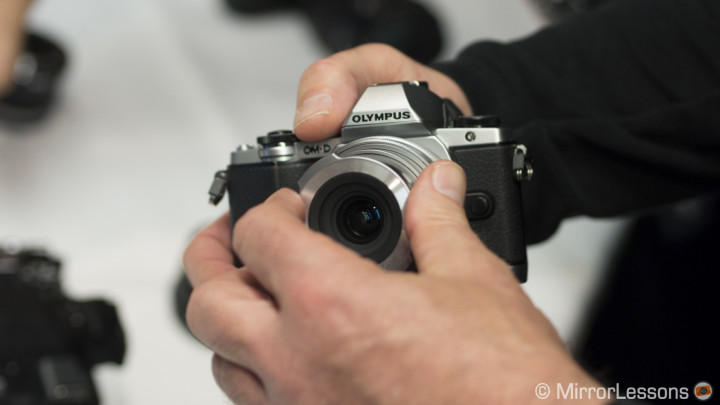
The new lens cap is meant to be screwed onto the lens so there is no risk of losing it either. The only downside is that it isn’t included in the package; you have it to purchase it separately. I honestly don’t understand this choice, also because this is currently the only electronic zoom lens by Olympus out there. It would have been a great thing to have it included in the box.
The OM-D E-M5 gets a tiny restyling…
As I said, the E-M5 will continue to be sold and there is actually a new black edition of the camera coming out with the M.Zuiko Pro 12-40mm f/2.8. In that kit, the E-M5 will be an updated version with new dials similar to the ones on the E-M10, a leather texture grip and a grainy paint on the body that can hide scratches and scars better. I know, there is nothing particularly exciting here also because this “E-M5 II” will only be sold with the Pro lens and the price will be €1499.
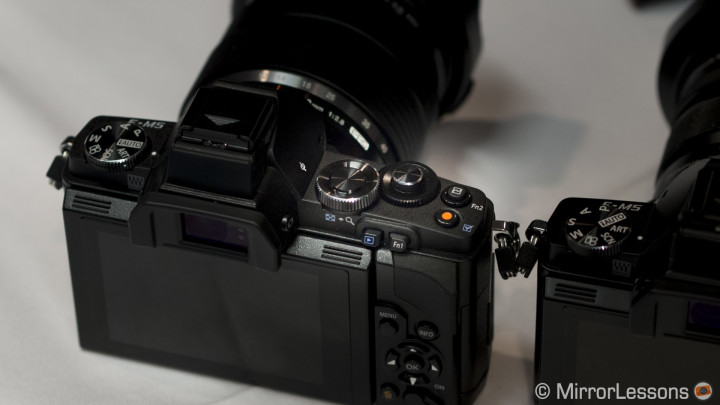
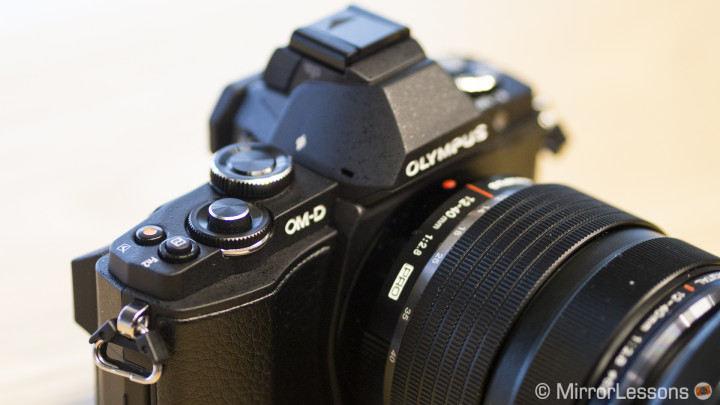
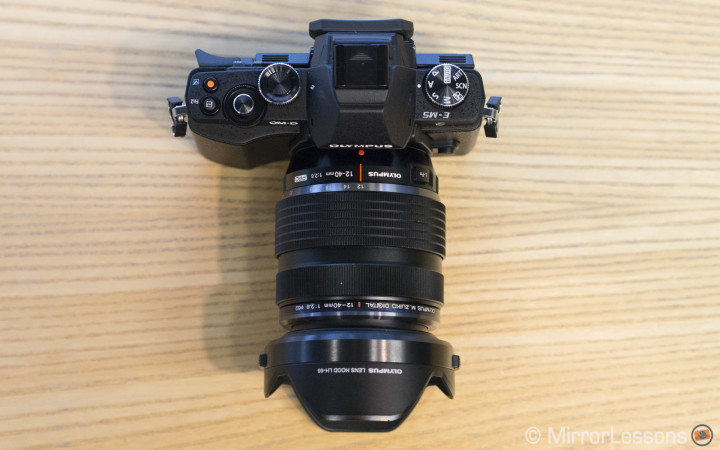
The good news is that the “classic” E-M5 will receive a firmware update that adds small AF target points and the extended ISO Low setting that you can find on the E-M10. The “E-M5 II” will already have these two features.
Conclusion
That’s it for now. The OM-D E-M10 is certainly an interesting new camera. I like the willingness of Olympus to expand the OM-D line, as it has received many positive reviews from photographers. This is certainly being triggered by the fact that OM-D cameras are selling well in Europe and North America and that the E-M1 has been such a success so far.
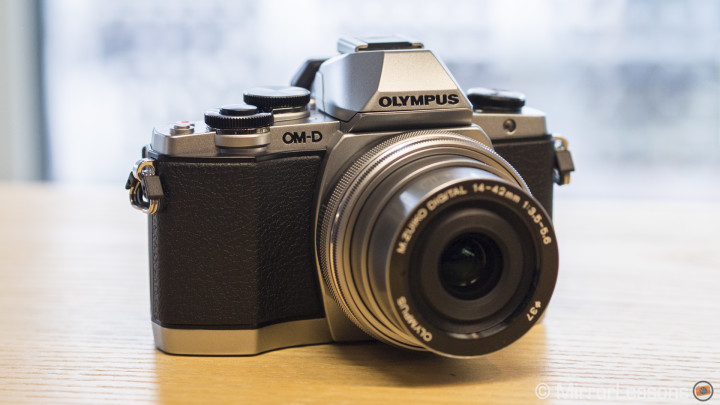
The feeling when using the E-M10 during these first days has been great especially from an ergonomic point of view. As a regular E-M5 user, I can confirm that the redesigned button layout and dials make it nicer to use in comparison to the E-M5.
Certainly the E-M1 remains the king of ergonomics and functionality but let’s not forget that it is intended for a different user. The E-M10 is an entry-level camera and aims at amateur photographers.
My only little concern for now is the 3-axis stabilisation. This isn’t related to the overall performance but to the fact that the 5-axis stabilisation has been a flagship feature of OM-D cameras (plus the Pen E-P5) and I can’t help but wonder if this choice, certainly related to the marketing and positioning of the camera, doesn’t make the new E-M10 less unique than its brothers and sisters. Maybe I simply need to forget the E-M5/E-M1 for the following days and use this camera just as a new user would do. Who knows, I might find the 3-axis stabilisation to be fantastic in the end. 😉
One more thing…
As I said at the beginning, we have had the OM-D E-M10 for five days now and we are also preparing the complete review.
This last paragraph is for you, the readers of this article: if you would like to see something specific in the final review or suggest something that we can test or compare, feel free to leave us a note in the comments section below.
If we get enough questions, we will write a dedicated article where we try to answer them all, making it the first Q&A review for our readers. If it works and you appreciate it, we might do this often.
Stay tuned and hit us with your best questions!
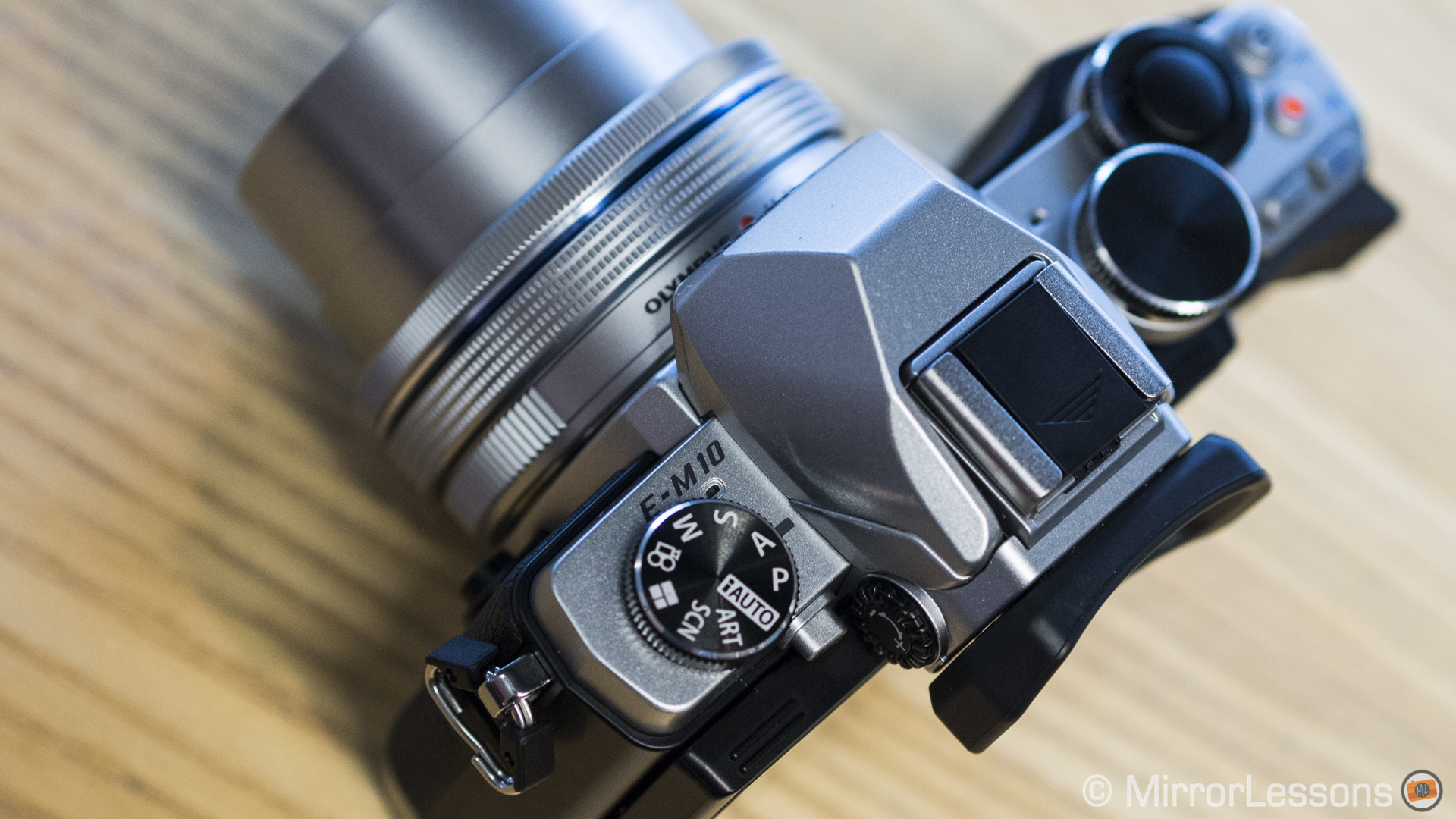
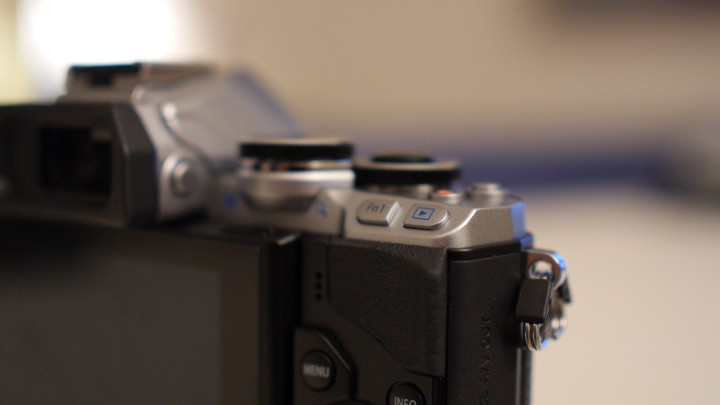


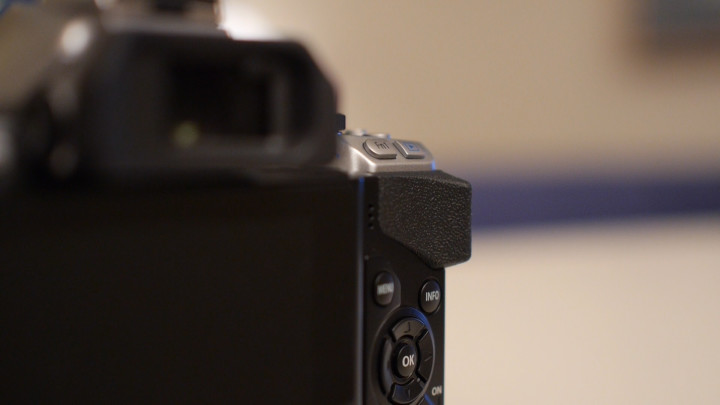
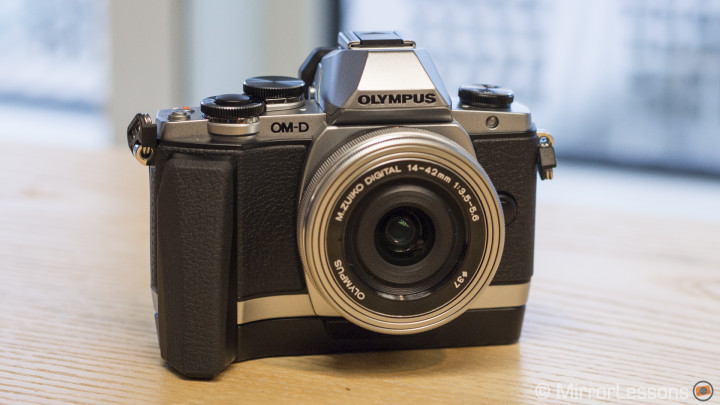
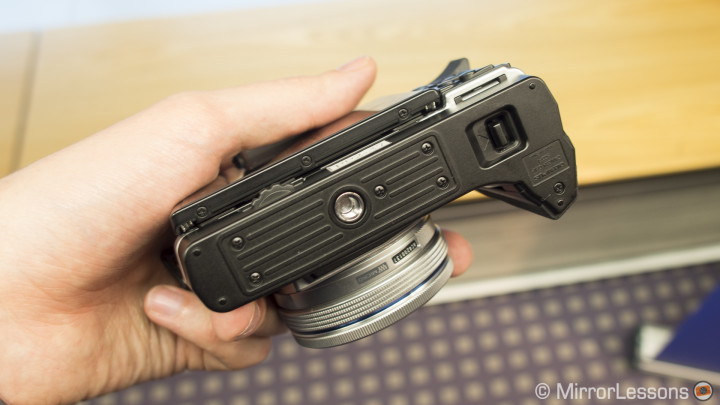
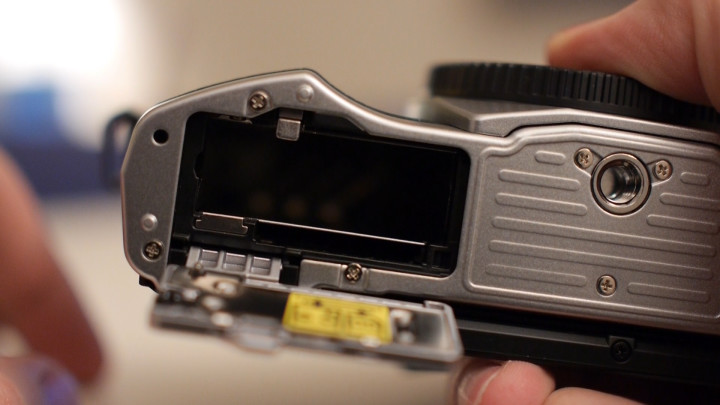

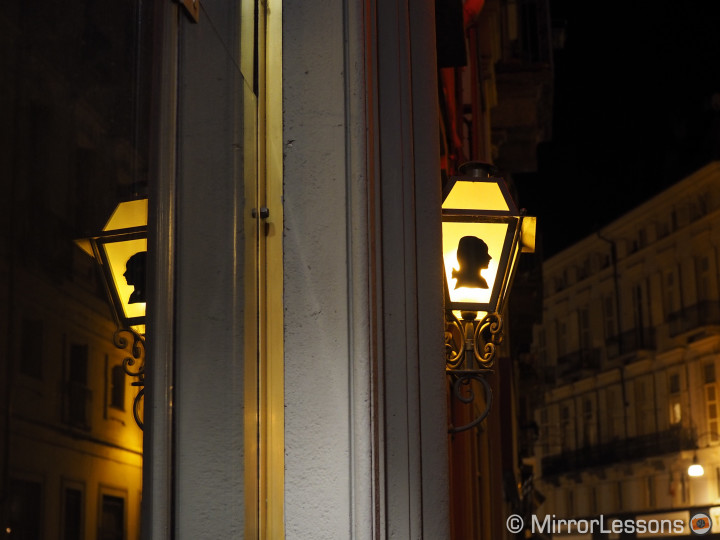









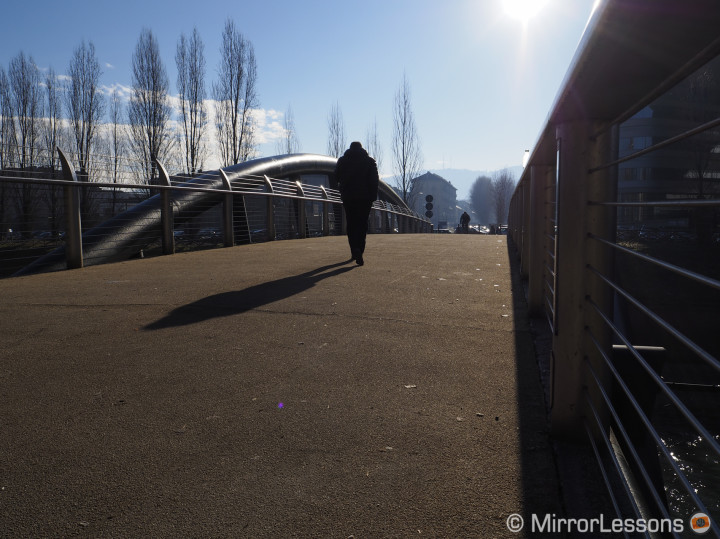










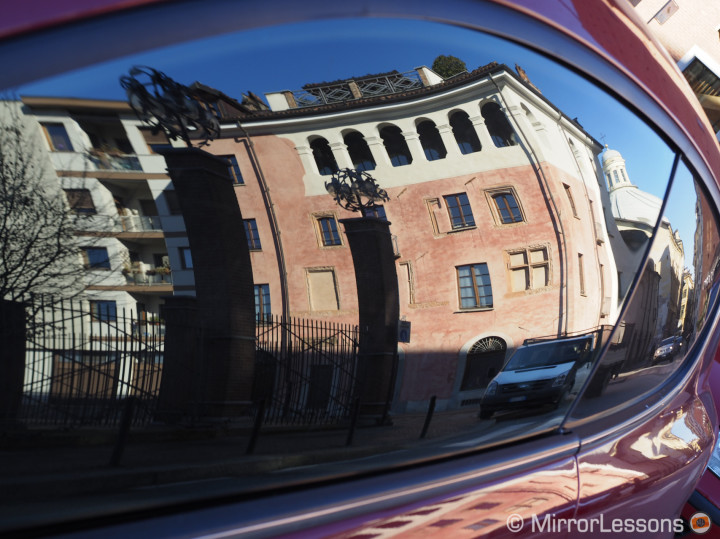












Olympus is marketing this camera as entry level and made the batter the same as the Pen series as an enticement for those camera owners to move into the OMD line. Other than that, there is no reason for actual users to keep repeating this ‘advanced entry level’ monotony as that clearly isn’t what this camera is.
Most users don’t really care about weather sealing. Some do, but most do not. Not even most professional working photographers. Let’s be honest. The e-m5 has 5 axis which is missing in the e-m10 but other than that, what are we really talking about here that positions the 10 beneath the 5?
-The 10 is superior to the 5 in important ways.
-Better EVF due to improved processor speed.
-WIFI control and image transfer.
-Pop-up flash for use as fill flash and remote control of external flashes.
-FOCUS PEAKING. This feature gets to the heart of why mirrorless is so great-the use of high quality manual lenses on the cheap. Focus peaking makes adaptation of high quality glass more than a novelty and instead adds another valuable tool for us.
I find this camera to be quite the steal. Add the optional grip and it can tackle just about anything. And at half the cost (new) of the e-m10. There isn’t a better mirrorless value currently (if ever) available. The e-p5 is a great camera but for serious use, good ergonomics for sustained shooting and a viewfinder on a camera aren’t really isn’t optional.
There is nothing entry level about this camera at all, it runs circles around any and all DSLR in the same price range. the images will blow you away. And the clarity and definition are a result of sensor and software. the only thing that the 5 has is weather sealing..I am not one not to take pictures in the rain
The tight fit.. is not an issue. I have feeling that people are forgetting that they have to push the lens release button.. I have even heard of one person damaging the camera.. and I am certain he tried to take the lens off with out pressing the button. Press the button the lens comes off like silk. ITS A GREAT CAMERA .. the reviews especially the test shots do not do it justice..
Hi Ramses,
What Mathieu said was, on the E-M1, when the camera is connected to the smartphone (in wireless trigger mode), you can control the settings ONLY through the phone. The camera display goes blank. Whereas on the E-M10 you can continue to control the settings on the camera screen, while using your phone as a trigger.
I do miss this feature sometimes on the E-M1.
What about the E-M5 with the Pro lens? You save a little bit of money and get some of the features the E-M1 has such as being water and dust proof for example.
Hi Guys,
Great review, very helpful indeed!! 🙂
I own an E-PL3 since about 18 months, which was an upgrade from a (really good) Canon 230SX point and shoot. Besides the two 14-42 and 40-150 from the kit I have the 17mm f2.8 pancake and the 45mmf1.8 prime. I love this little camera for it’s size, quality and level of customization, however I feel like an upgrade and I was pleasantly surprised with the introduction of the OM-D10. The 12-40 f2.8 pro lens is also a sweet thing, but it’s still on my wish list 🙂
I almost bought the OM10 twice already (once they didn’t take credit cards and the second time I was 15 minutes late and the shop closed), but I’ve looked a bit more into the OM1 and now I’m really undecided. I just don’t know if I need or want all the additional functionalities (and size), and if it’s really worth the additional money. However, if I would get the OM1 with the pro lens (weather proof combo) instead of the OM10 with the kit lens plus the pro, I’d get a sweet deal. The cost is secondary, but I don’t want to regret my decision… At first I thought about just getting the OM10 with the new kit lens (and maybe the 25mm f1.8), but I also would like to get the pro lens eventually… Any thoughts for this undecided buyer? 🙂
Thanks in advance!
It is available on Amazon.
Great review, thank you, excellent points. I have the camera for about a week, still getting used to the menu system and the depth of its menu system. I find it more complicated than my, no longer used, D7000. Love the size and weight, excellent photos and the wifi is well integrated. Question- I have been unable to find the lens cap you describe for the pancake zoom… again thank you…
The main difference between the E-M10 and the X100s is the lens system (interchangeable versus fixed). That can certainly influence your photography and the way you approach it. A fixed prime lens is a very good training in my opinion. You’re forced to think more before taking the shot and be in the right place at the right distance. If you are looking for a smaller body to go along with your DSLR, go for the X100s. If you want to replace your DSLR, the E-M10 has more options and offers a more complete system (lenses, accessories …).
Hello Mathieu, thank you for the very thorough review. Tony Northrup did a very good review on this camera also and it his preffered mirrorless camera. I have been doing some research on the Fuji x20 and the x100s and I really like them also. I know they have different sensors but how do you feel the m10 ways up against the x100s? I like the fact I don’t have to invest I’m lenses but that could be a negative also. FYI I do own any mirrorless cam only dslr, I’m looking for one for convenience and th simple fact that they look like fun to use.
Hi Sabrina,
I’m not convinced that Olympus is marketing the E-M10 as the “entry-level” OM-D. My sense is that it’s more how the reviewers on the internet are positioning it based on it’s reduced cost at introduction. Granted, it does not have weather sealing and the IS is “only” 3 axis, neither of which are issues in my mind, but in many ways it is a more advanced camera than the E-M5. I bought the E-M10 last month, and at the time was evaluating it against the E-M5. In the end, the superior LCD and faster EVF, the wireless capabilities, the (slightly) improved ergonomics and smaller size of the E-M10 won me over. Besides, it was $100 less, which didn’t hurt. I don’t see the E-M10 as “entry level” in any way; it seems to me more to be of the E-M5v2.
Hi Mike, I’ve owned the E-M10 for about a month now (very, very nice camera). Regarding the tight lens mount: it’s not an issue on mine. The mount is tighter than on my former GH1, however it’s not a problem in any way. And interestingly enough, I experience more resistance mounting the Oly 45 than I do any of my three Pana lenses, which would suggest it might have more to do with the lens mount itself than the the mount on the body. I’ll be receiving the Samyang 7.5mm in the next few days; it’ll be interesting to see what that one is like. But the bottom line is, this “issue” is definitely not something that should give people pause to wonder about getting this wonderful little camera if it’s specifications meet their needs.
Hello,
today both OM-D E-M10 and E-M1 got a firmware update:
“E-M1 firmware Ver.1.4 (May.21 2014)”
“E-M10 Ver.1.1 (May. 21 2014)”
In E-M1 v1.4 release notes they say: “Shooting images when using the remote control function of the smart phone application “OLYMPUS Image Share” now supports Art Filter, custom self timer, zoom operation when using the electric zoom, Digital Tele-converter, and Release mode. It is necessary to update to the latest version of OLYMPUS Image Share.”
I wonder if that means that you can now actually take a picture via smart phone with E-M1? Above here you say “Unfortunately, it won’t be possible to implement this feature into the E-M1 via firmware update because the E-M10 has a different WiFi hardware than the E-M1.”
Have they now found a solution to that?
Can anyone confirm this?
Hi Mike, I do remember the lens mount being a little tight especially when mounting the 14-42mm motorised zoom, but I never considered it a big problem or neither find it too hard to mount the lenses. That being said I haven’t used the camera for several consecutive months so I cannot tell you if it is something that improves over time. If it is something that really concerns you, I suggest to ask some E-M10 users directly or pop in a camera store and try one for yourself.
Hi Mathieu,
Thanks so much for your helpful post. I found this website through doing some searches on the web for EM10 reviews and yours was very very helpful. I know this post is a bit old but I hope this message gets to you, have you had any problems with the lens mount on the EM10? I see on various places on the web (for example: http://www.dpreview.com/forums/thread/3624951?page=3) that the lens mount has been giving a lot of people trouble with its super-tight fit and that’s scaring me a little bit as I’m looking to upgrade to this body in the near future. I’m wondering if you personally ran into that issue or have heard of others who had problems.
Thanks so much.
You can 100% use manual lenses.
Well maybe the E-M10 is a better choice in the end. Smaller, faster 🙂
Thanks Mathieu, I took your advice and popped into my local store and had a look at the XE1 – unfortunatley they didn’t have any Olympus cameras at all though. I see what you mean about the 18-55mm – very nice well made lens and gave the camera a very solid feel, although perhaps a touch front heavy? I think if I was just looking for a CSC to serve all my needs, I can see that the XE1 would be the way to go but given that I have a D610 and the CSC is more for casual holiday and travel use, maybe the EM10 makes more sense – i just wish I could get a hold of one to see how it feels in the hand.
Hi David, the E-M10 has better AF, Image stabilization and EVF. The X-E1 has nice colours, better dynamic range and the kit lens is better.
Then it depends on what you are looking for exactly. The e-m10 is certainly more compact as well as its lens system. Maybe the best thing could be to pop in a camera store and try them both. Ergonomics is one of the most important aspect in my opinion.
Hi Mathieu, I have a Nikon D610 but I’m looking for something smaller and more compact for travelling but still able to deliver high quality results – I was all set to go for an XE1 with the 18-55mm lens as the prices have really dropped but now I’ve seen the reviews of the EM10 I must admit I’m tempted by this too. What would your recommendation be.
Thanks, David
I have an Olympus SZ-31 MR for travelling, it can record simultaneous hi-res stills without pausing the video, it might be ok if you want to do a lot of mixed shooting. It has a story book feature and a wide/zoom 24x (25-600mm eqv.), a 16-Meg backlit CMOS sensor and two separate TruePic V image processors. It is a good all rounder, the Image quality is good but obviously not as good as a DSLR, but at only £140 I’m not complaining.
Thanks for the useful preview…
I’m planning to sell my love Pentax K5 and going into the mirroless system, because of my bypass and I need small equipments, but still haven’t decided about going into XE2 or OmD10 ( for the price Omd10, otherwise I’d chose Omd1 )…
I heard that I’m not able to use manual lenses like Om50mm 1.4 ( you know it what a gem ens ).. I mean Omd10 doesn’t support the manual lenses with adapters.. Is it true…? Or will I be able to shoot with manual lenses like Om50mm 1.4..?
I’m at a little bit of a loss as to which camera to go with between the em-5 and the em-10. I always try to go with the middle range so I can grow into the camera which in this case is supposed to be the em-5. they are marketing the em-10 as the entry level version but when looking at the specs and reviews etc. the em-10 seems just as good if not better than the em-5. Amazon at the moment has the em-10 selling for only $50 less than the em-5 which makes the decision even harder. Would you say that the em-10 is noticeably more entry-level than the em-5 or pretty well equal?
RX100m2, no doubt about it. It has a better video codec and can record up to 50/60p. Here is a video I made with the RX100m2 in Wales last summer: http://youtu.be/-ULhMx4J0VA
If you’d compare OM-D E-M10 with rx100m2, which one has better video quality?
Hi Simone. I tried the A6000 for a couple of minutes only so I cannot compare the two cameras really. Certainly the A6000 autofocus seems to be very impressive.
Thanks Mathieu! What about the sony a6000 vs the e-m10 ?
Great review Mathieu. One question/comment about the 3 axis vs 5 axis stabilization question. Did you arrive at your conclusions while testing the stabilization using the same lens on both the OM10 and OM5? The reason I ask is that pancake lenses tend to have their center of gravity (weight) closer to the mount versus non collapsible designs. I have noticed with other cameras that pancake lenses tend to have slightly less effective stabilization when compared to comparable traditional designs. This could account for the difference in effectiveness that you observed. At such low shutter speeds, this could account for a 1/3-2/3 stop advantage in favor the traditional design. Thank you again for the great review.
The E-M10 certainly has a faster AF, no doubt about it. Regarding image quality, Fuji X cameras have a very nice and less digital colour rendering and a better dynamic range but for most situations you won’t see a drastic difference.
Thanks Mathieu! What about the Fuji XM-1 as compared to e-m10? I understand the xm-1 is also introduced as an entry level model. Besides not having a viewfinder in xm-1, would there be a big difference between these 2 models in terms of image quality since they are using different sensors? You also mentioned in the xm-1 review that it does not have a fast AF, how does that compare to the e-m10?
You will be more than fine with the E-M10. Slightly improved image quality over the E-M5, better EVF and LCD screen, better buttons and dials. The difference between 3 and 5 axis are really noticeable only with very slow shutter speeds, so I don’t think it will be a problem for you.
Thanks for the great article Mathieu! I have been using a Canon Powershot and am intending to switch over to a mirrorless camera, most likely the olympus omd series. For a beginner in mirrorless cameras, which would you recommend, the e-m5 or e-m10? Would the 3 axis and 5 axis stabilisation make a difference for a new user like me?
1. I think you can assign it to one if the function button.
2. The release candidate of ACR 8.4 supports the E-M10 raw files, so the next lightroom and camera raw updates should be fine.
I have two questions:
1. I noticed that two buttons that are on the EM1, preview and quick white balance, are missing on the EM 10. The white balance isn’t an issue since it can be accessed elsewhere, but is there a depth of field preview that can be accessed elsewhere?
2. I read in a review that there is an issue between Olympus and Adobe regarding an update to their Raw Converter to include the EM 10. Can you please address that.
Hi.
Are all cameras like that? That they use the same amount of time after a shot, to render or do other stuff, I’ve tried to shoot just raw but still it needs, say 20 sekonds, before I can take the next pic. I’ve had canon and panny, both are doing it..
Hello..this is my first time on your site and have really enjoyed reading your reviews. Thanks for that.
Would it be possible to compare shooting 42.5/0.95 on em1 and em10, shooting experience as well as the picture quality?
Is it possible to see a couple of examples about the moiré issues in your portrait shots? It is something I haven’t noticed so far with the 75mm and 17mm.
I guess my concern is moire…the lenses are so sharp…and no aa filter on the E-M1…I recently have just started shooting portraits…and I am having horrible moire issues using the zuiko 17 1.8 and the 75 1.8 . Sweaters are my worst problem with denim not far behind . I hope the 25 1.8 is better handling this issue…otherwise I am considering getting out of micro four thirds. Love your web page . It is a great resource for me.
Not a problem, Osvaldo!
Ooops.. Sorry I did not remember I had already posted the question and had not noticed your kind reply..
Hi, thanks for the article. Is the flash hump of the em10 made of plastic or metal? Just for curiosity, since I Need This Camera!
..I know that I will not get a much better iq compared to the excellent and compact PM2, but the shooting experience with om10 (especially its viewfinder and double control dials) should be greatly increased, even if I am not a pro, just a casual shooter
1. Yes the E-M10 has an AE bracketing mode like the E-M1. But with 7 exposures you can only set a 0.7 EV difference. With 3 and 5 exposures, you can have 1 Ev difference max.
2. I will try that tonight and tell you 😉
It looks like it’s made of plastic. Cheers.
Hi, thanks for this. I would like to know whether the flash is made of plastic or of the same metal of the rest of the body.
Hello. First time visitor to your website and I have to say great first impression review.
I am looking to buy the E-M1 but am now also considering the EM-10. I have a couple of questions I am hoping you can answer.
1. Does the EM-10 have the ability to take multiple photos like EM-1 does in HDR mode. I don’t mean can the camera perform HDR in camera, but rather if I can set the multiple exposures (Auto Bracketing) to something like, 5 exposures 2 EV apart? That is an option I require and EM-1 does well, even allowing for up to 7 exposures 2 EV apart.
2. Does the camera produce high noise levels at long exposures? This seems to be an issue with the EM-1 which has the same sensor (discussed on many websites, here is an example: http://www.mu-43.com/showthread.php?t=53621).
Thank you in advance for your help. Hopefully it will make my decision easier!
Ivan
Hi
Aside of the new Live Composite mode, I also like to take star trails, I have the panasonic lx7, I have been able to take decent star trails taking a number of shots at 30″ exposures, but I dont like that I also have to wait another 30 seconds for the camera to apply noise reduction and there is not way to turn it off, I was going to get the GX7 but the bulb is only two minutes, could you check if this mode allows you to get more than 99 shots per time period and if you can turn off noise reduction on this mode.
And one more request I almost got the EM5 and the EM1, But, when recording video if I want to take a still, those cameras will pause the video, take the still and resume video, breaking the video and loosing that important moment as well, this model claims it can do both without interruption, could you verify that and how many shots can you take per video session, Panasonic allows me 20 shots on any video length recording.
Thanks for the review, excellent!!
Ricky
Hi, thank you for the test! I already have an EM 5 so currently I am not interested in switching. But what I do see are the new lenses. Could you expand a bit on the 25mm 1.8? Do you see how it compares to the Panasonic 25mm 1.4? Thanks! Also I see a point in switching from the 12-50 zoom to the new compact one… it really makes a size difference!
That’s an interesting question Robert, and a question I’m asking myself too. When I asked the Olympus product manager about it, he told me that OM-D and Pen cameras are in a different market. The Pen’s are selling better in Asia, the OM-D’s better in Europe. But the E-P5, E-M5 and E-M10 are actually very similar.
Simply put, the E-M10 makes more sense to me because it has a built-in EVF in comparison to the EP5. That is the main difference for me. So if you have purchased the external VF-4 for your E-P5, then the upgrade (if we can call it like that) isn’t worth it really.
I was getting ready to upgrade from the E-P5 to the E-M1. This new camera makes that move a little tricky. It’s much more affordable, but is the E-M1 worth the price difference. Of course, that begs the question, is the E-M10 really much of an upgrade from the E-P5. Your thoughts?
Thanks Tyler. We always focus on real world shooting and we also like to include many pictures in our article. Sometimes it can make the site slower to load, but I think it is very important to give to our readers the possibility to see many pictures in various situations. In the end photography remains the reason we are doing all this 😉
The E-M10 is very compact. And that’s another thing that makes it very interesting in my opinion. For the high ISO comparison, we will certainly test it with the E-M5 (and E-M1 if it finally arrives) and will try to do it with the GX7 as well.
I had also started leaning towards the GX7 by the time I heard Olympus would be coming out with a new camera, and I decided to wait. Though I haven’t used any of these cameras personally, the E-P5’s 2×2 control scheme really calls to me in addition to being really compact. I have a GF1 and like how compact it is compared to my G3. Other things holding me back on the GX7 were the better Olympus out of camera jpeg quality, the tiltability of the EVF (seems fragile) and no IS during video. Otherwise I agree that the GX7 might be a better choice between those two. So far it would seem that the E-M10 is the best of both worlds, except for the compactness. I’d like to see high ISO perfomance and how it handles in comparison to the other two. Can’t wait for the extended review. I had already mentioned on one of the other reviews here (might’ve been the GX7) that I appreciate the reviews here compared to other sites because of the real-world shooting experiences you include.
I agree those three cameras are definitely very close. Personally, I would choose the E-M10 or the GX7 for the built-in viewfinder, a must have for me 🙂
Hi Frank yes we received your original comment 😉
For the camera, I’d also be interested to know if you see the difference in how the metering works that Thom Hogan mentioned might exist:
http://www.sansmirror.com/newsviews/olympus-e-m10-camera-announ.html
Does metering a high-contrast scene end up with different values for the E-M1, E-M5 and E-M10?
I tried to send this once before, but it didn’t seem to get sent.
I’d be interested in knowing how the pancake zoom compares to the Panasonics: the 14-42 PZ and the 12-32. Plus some comparisons with some of the kit zooms. Maybe the Olympus 14-42 R and the classic Panasonic 14-45.
Obviously, the comparison of the 2 25mm will be coming, but also to know how the relative quality compares with the 17mm, 20mm and Olympus 45mm.
Thanks!
I agree. Most sites keep harping on the fact that this is a low end OMD and point out its deficiencies compared to its big brothers, but before the E-M10 announcement I was struggling with the choice between the E-P5 (great Oly jpeg IQ, 2×2 dial interface, IBIS, and small size) and GX7 (built-in EVF, GUI, high ISO IQ, IS and price). I hadn’t been considering the E-M5 due to lack of focus peaking, no flash, slower max shutter and complaints of spongey buttons. In my opinion, the E-M10, E-P5 and GX7 are competing in the same “value” bracket due to overlapping features for similar prices. I’d like to see a three-way shootout between these cameras.
Hi Michele, that’s right the E-M10 doesn’t have an AA filter, like the E-M1. This info comes directly from my Olympus sources.
does m10 have no AA filter? i did not find this info anywhere, please confirm
best hand’s on review on web!
I’ll see what we can do 😉
I’d be most interested in lens comparisons with current models. A pancake comparison of the 14-42 EZ with the Panasonic 12-32 and 14-42 PZ would be very interesting, plus with the great 14-45 non-pancake.
Also, comparing the new Olympus 25 with the Panasonic 25 is obvious, but also an attempt to slot the lens into a “quality tier” with the Panasonic 20 and the Olympus 17 and 45.
Hi Steve, I will check if there is any “shutter shock” effect on the E-M10. This camera is certainly a nice upgrade from the GX1. Better sensor, internal stabilisation, built-in viewfinder. And it is cheaper than the GX7.
Much has been written (in various forums) about the so called “shutter shock” effect. Is this something that you would normally test for in your reviews.
From your comprehensive “First Impressions” article the E-M10 looks like a viable upgrade from my Panasonic GX1.
The RX100 II is more pocketable and IQ is great. But the With the E-M10 you have the advantage of a built-in viewfinder and with the new 14-42mm, the combo is very small. It won’t fit in your jeans pocket but you can easily put it in a large coat pocket.
First impression article looks great. I have 5d3 & x100, but I’m in a market for a better smallish camera which I can use anywhere. I am very interested in this, and how it would compare with the RX100ii. Obviously I would imagine the IQ on this is better, but RX100ii is much more pocketable, so would be interesting to hear the pros and cons between the two, and how you would pick given the tradeoffs. Thanks. Good work!
Yes you listened right. The E-M5 is slightly lower and quieter then the E-M10.
Thank you for the first impressions, Mathieu. Is it just me or does the E-M10 have a high pitched squeak at the end of its shutter? The E-M5 sounded much lower and quieter to me in the video.
Ok, it has been noted 😉
I think this camera will be a direct competitor of the Panasonic GX7, so I would like to see those compared…and before I make my buying decision in 2 weeks! 🙂
Hi Morten, I really like this kit zoom and quality seems to be great too. I will compare it with the previous 14-42mm, thanks for the suggestion 😉
You are right I didn’t find anything either. I am sure it will be available for pre-order very soon. The lenses should be available between mid February (14-42mm) and beginning of March (25mm).
Is the cap for the 14-42mm lens available on any site? I can’t seem to find it to pre order it. Also, is the release date in March or February for the lenses. Nice review. Thank you.
Thank you for this preview. This could very well be my e-pl1 upgrade. Please put the compact kit zoom to the test in your coming review as well. I suspect the target audience for this camera will see the compact zoom as a selling point. Question is – does it perform better or worse than the previous 14-42 oly kit zooms?
You’re welcome Jonas!
Looks like a great deal from Olympus. Look forward to see more about this camera
Thanks for this informative, early comparison! Just what I was looking for. 🙂